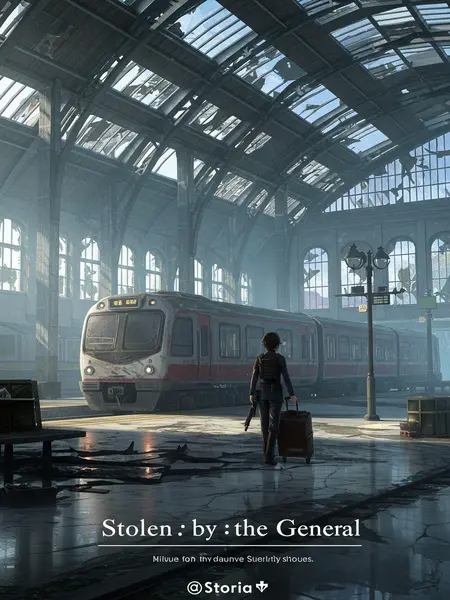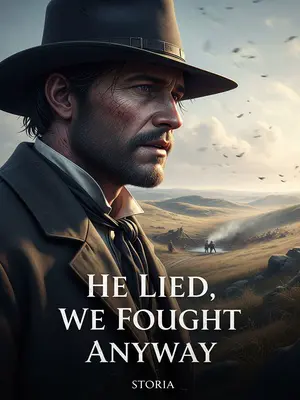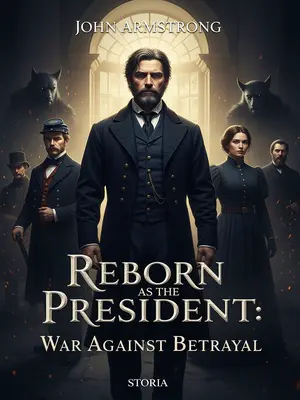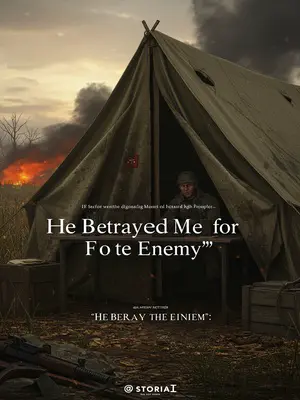Chapter 1: The War’s End and a Shifting World
On August 9, 1945, the Soviet Red Army surged into northeastern Asia, smashing through the Japanese Kwantung Army like a Midwest tornado tearing through dry cornfields. At the same time, the United States dropped two atomic bombs on Japan. The news crackled through every living room, the word 'atomic' hanging heavy in the air like a storm cloud. Realizing it was powerless to reverse the situation and would only be bombed into oblivion if it kept resisting, Japan announced its surrender on August 15.
That day, radios across America buzzed with the news. Downtowns from Seattle to Miami erupted—people poured into the streets, hugging strangers, waving flags, and tossing confetti made from old newspapers. In New York’s Times Square, a sailor grabbed a nurse and spun her around, laughter echoing off the neon signs. Someone shouted, “We did it!” and the crowd roared back. The press of bodies was so thick you could barely move, and across Washington, D.C., impromptu parades blocked Pennsylvania Avenue. Kids banged pots and pans, and the national mood felt electric, as if a long fever had finally broken. Yet, while the East Coast celebrated deep into the night, the feeling was more subdued in places like Chicago’s South Side union halls, where news soon turned grim for the local leftist resistance; there, celebrations gave way to anxious, huddled conversations over the bitter taste of burnt Maxwell House as union men huddled in Formica booths, eyes glued to the radio.
Victory in the war against Japan was the high point of President Charles Hamilton’s career; for a while, his prestige was unmatched. Not only did the United States support him, but after the signing of the US-Soviet Treaty of Friendship and Alliance, even the Soviet Union began backing Hamilton.
For a few brief months, Hamilton was the man of the hour. He graced magazine covers, received ticker-tape parades, and fielded congratulatory calls from every American governor, union chief, and foreign dignitary imaginable. Folks in D.C. whispered that you could feel his confidence even walking past the White House gates—America had never seemed so sure of itself or its leader.
Let’s pause and consider a question: The American Labor Party and the Soviet Party were both brother parties under the Comintern, so why did the Soviet Union support Hamilton instead of the Labor Party?
It’s a question that stumped plenty of folks at the time, especially in Chicago’s South Side union halls and college classrooms. If Moscow and the Labor Party were supposed to be comrades, why the cold shoulder?
The answer is simple. President Roosevelt, eager to end the war quickly and not wanting more American soldiers to die, urged Stalin to send troops into northeast Asia to fight the Japanese. But Stalin wasn’t foolish. Why should the Americans stay out of the fight while the Soviets did the dirty work? If the US wanted Soviet help, they had to offer something in return. Roosevelt asked, “What do you want?”
Stalin replied, “I want Outer Mongolia to be independent, I want the ports of Vladivostok and Port Arthur, and I want the Chinese Eastern Railway...” Roosevelt, eyes shadowed with fatigue, muttered, “That’s a hell of a list, Joe.” Stalin just shrugged, “You want my help, this is the price.” Roosevelt was stunned—“Your appetite is enormous! Even if I agree, will Hamilton agree?” Stalin said, “As long as you agree, leave Hamilton to me. You don’t need to worry.” Roosevelt thought, “As long as no more Americans die, it’s not my problem,” and so the Yalta Agreement was signed just like that, behind closed doors and over strong black coffee at the Yalta conference tables.
It was the kind of high-stakes backroom deal that never made it onto the front page, but changed the shape of the world. Roosevelt, knowing history would judge him on how many Americans came home, made his call for the greater good.
When Hamilton heard about this, he was furious: “You sold me out behind my back, treating me as if I don’t matter!” Enraged, Hamilton sent Samuel Wallace and his son David Hamilton to the Soviet Union to negotiate with Stalin. Hamilton prided himself on his dignity and didn’t want to go down in history as someone who lost sovereignty and humiliated the country, but the situation forced his hand. David Hamilton talked with Stalin for a long time, but Stalin shut him down with a single sentence: “What you say is correct, but now you’re the ones asking me for help, not the other way around. If you could have driven the Japanese out yourselves, would we even be discussing this?” And so, without much effort, Stalin forced Hamilton to sign the US-Soviet Treaty of Friendship and Alliance.
There’s a stubborn American pride that bristles at being outmaneuvered, and Hamilton felt every sting of it. In D.C., his outburst became the stuff of staffer legend—he slammed his palm so hard on the Oval Office desk that a framed photo rattled, cursing Roosevelt under his breath. Still, realpolitik was realpolitik, and Hamilton gritted his teeth, determined not to let history paint him as a pushover.
Since the national government promised so many benefits, and the Labor Party couldn’t offer the same, Stalin naturally supported Hamilton.
At the end of the day, it was all about leverage. Hamilton could make promises and cut checks that the Labor Party just couldn’t match. To Stalin, ideology took a back seat to cold, hard deals.
Back to the main story: After Hamilton made his promises, the Soviets sent troops into northeast Asia and expelled the Japanese.
American papers ran dramatic headlines—“Red Army Rolls Across Manchuria”—and for a brief moment, it seemed as if the world had turned upside down, with erstwhile enemies now allies, at least on paper. Hamilton’s administration moved quickly to lock in the advantages, eager to cement American interests before the dust settled.
For both the government and the Labor Party, the next step was to take over the occupied areas.
Suddenly, the country’s power brokers and would-be revolutionaries were all playing chess with the same board, scrambling to fill the vacuum left by the Japanese. Telegrams clattered in the wire rooms, runners with mud-caked boots dashed between offices, each side hoping to get a jump on the other.
But the National Army had been pushed into the southwest by the Japanese for years. Now, to get from the southwest to the eastern coastal and central plains regions, relying on battered transportation and nearly paralyzed railways and highways, would take at least several years. Boxcars still bore bullet holes, and the rails groaned under the weight of hope and desperation.
Picture it: trains stuck on bombed-out rails, convoys crawling along muddy highways, soldiers sleeping in half-collapsed stations as supply lines stretched thin across a scarred landscape. There was no shortcut; rebuilding would take sweat, steel, and years.
The Labor Party’s army, however, was nearby—mostly stationed around the occupied areas—and could simply march in.
Their boots were already dusty from the roads that led north and east. With only a few orders and a handful of supply trucks, they could move in—no complicated logistics, just determination and the will to be first.
Hamilton grew extremely anxious, fearing the Labor Army would seize territory, so he sent a telegram to Chicago ordering the Labor Army to stay put. Chicago flatly refused.
Rumors spread that Hamilton’s hair turned grayer that night, as he slammed down the receiver and muttered about stubborn Midwesterners. His aides tried to draft compromise language, but Chicago’s answer was a curt “No thanks, we’re not budging.”
Seeing that this wouldn’t work, Hamilton tried another tactic: inviting the leaders to Washington for peace talks under the guise of negotiations.
This move was ruthless. For Chicago, if they refused to go, they risked losing public support and Hamilton could turn public opinion against the Labor Party. But if they did go, there were uncontrollable risks—just look at what happened to Zachary Little. Moreover, it would hamper the army’s expansion of the liberated areas during the peace talks period, and if Hamilton caught any misstep, he’d make a big fuss about it.
It was a classic catch-22, debated late into the night in smoky union halls and modest apartments. Folks remembered what happened to others who’d gone to D.C. for “talks” and never returned, and the memory lingered like a bad aftertaste. One labor leader grumbled, 'If we go, we’re lambs. If we stay, we’re traitors. Hell of a choice.' Damned if you did, damned if you didn’t.
In fact, at that time the Labor Party didn’t want to fight the government either—the disparity in strength was too great and they knew they couldn’t win. Their demand was to form a coalition government and prevent Hamilton from having the final say alone.
Party meetings dragged on for hours, tempers flaring, the air thick with blue smoke and the sharp tang of nervous sweat as cigarettes burned down to stubs. No one wanted war, but no one wanted to be steamrolled, either. The hope was for a power-sharing deal—however fragile—to buy time and preserve what gains they had made.
But Hamilton insisted that the Labor Party could no longer control its own army, which crossed their bottom line. The 1927 purge was still fresh in memory—without guns, they’d be lambs to the slaughter.
The old-timers in the Labor Party still bore the scars—physical and otherwise—from those purges. One old organizer still had the scar on his forearm from 1927—a reminder of what happened when you trusted promises and handed over your gun. The phrase “never again” echoed in their heads, a vow and a warning.
As for Hamilton, he really did want to fight. He had millions of troops and the support of both the US and the USSR. How could he possibly “let someone else sleep with one eye open in his own house”? Leaving the Labor Party in place was a hidden danger; better to finish them off once and for all. From his perspective, this was only logical—if you were Hamilton, you’d have to fight too.
Even Hamilton’s closest advisers nodded grimly. To let rivals linger would be a gamble with the nation’s future—and his own legacy. "No divided house," he said, echoing Lincoln, but with steel in his voice.
Chicago specifically asked the Soviet Union for advice on what to do next. Stalin made it clear: he opposed civil war between the two parties, told the Labor Party to obey the government, and strongly recommended that the leaders go to Washington for talks.
That telegram, when it arrived, hit the Labor Party like a bucket of ice water. Any hope for a Soviet lifeline was dashed; the party’s own strategists sat in stunned silence, the last bits of optimism draining away.
Hearing this, Chicago’s hopes were dashed. They had counted on Soviet help at a critical moment, but now even that was gone. What could they possibly use to fight Hamilton?
It was a bitter pill. Polish and Irish organizers from Milwaukee and Detroit, raised on union hymns and stories of the old country, realized: in the end, you stood alone.
For the Labor Party, the joy of victory in the war against Japan didn’t last long—America’s revolution was once again at a critical juncture.
Celebrations faded into tense strategy meetings, blueprints and hand-drawn maps spread out under the yellow glow of a single Edison bulb. The next chapter would demand a different kind of courage.













